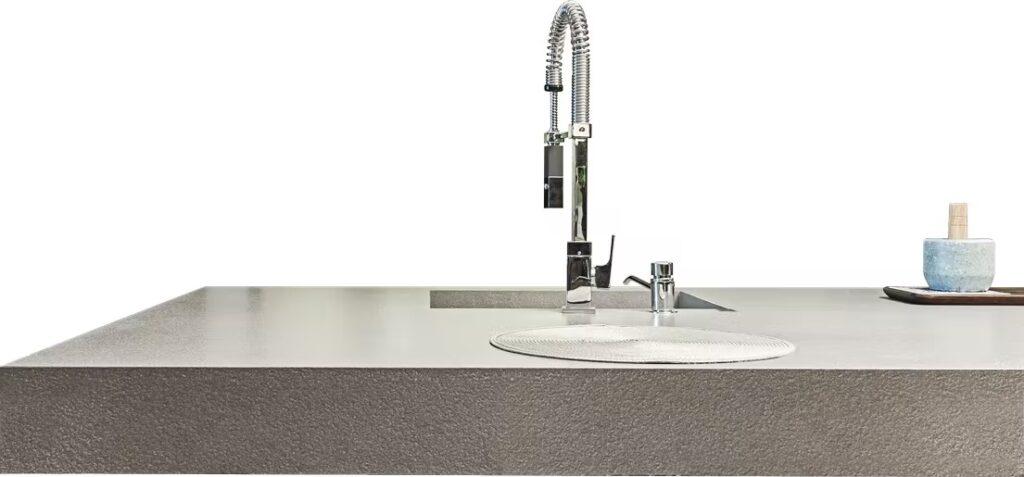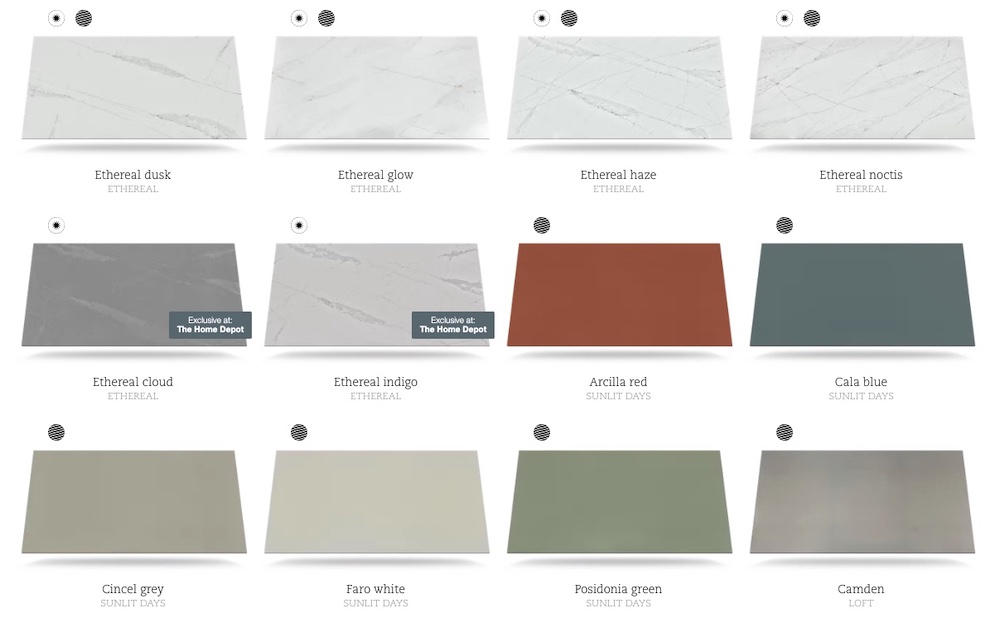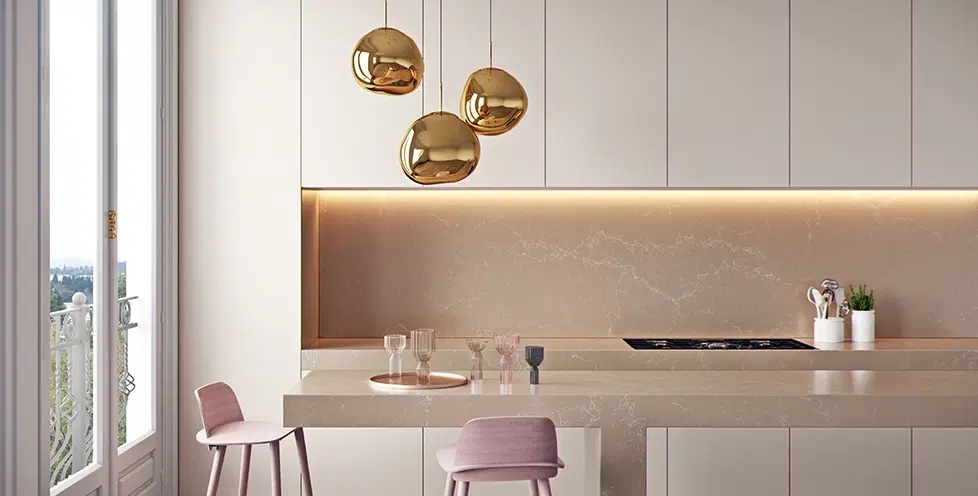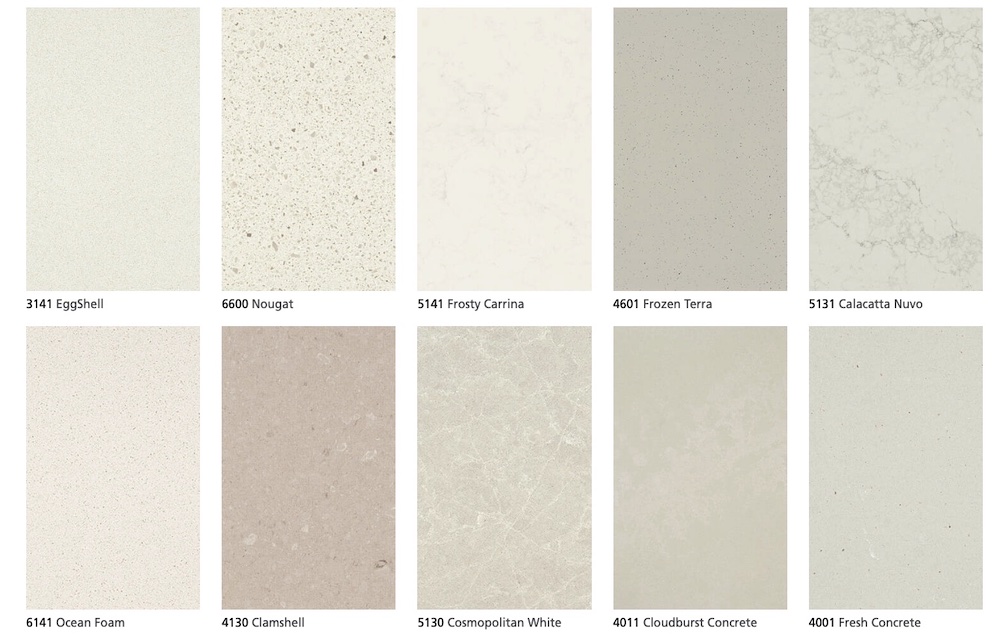Silestone and Caesarstone are two popular brands of engineered quartz surfaces that are commonly used in kitchen and bathroom countertops, backsplashes, and other surfaces. Both Silestone and Caesarstone are made from a mixture of natural quartz, resin, and other materials, which gives them a durable, non-porous, and stain-resistant surface. They are available in a wide range of colors and patterns, allowing homeowners to choose a surface that fits their unique design style.
While both Silestone and Caesarstone are high-quality products, there are some differences between the two brands. Silestone is a Spanish company that was founded in the 1990s, while Caesarstone is an Israeli company that was founded in the 1980s. Silestone is known for its wide range of colors and patterns, as well as its durability and resistance to staining. Caesarstone, on the other hand, is known for its unique textures and finishes, as well as its high level of resistance to scratches and chips.
In this article, we will compare Silestone and Caesarstone in terms of their composition, appearance, and performance, to help you decide which brand is the best fit for your needs. Whether you are remodeling your home or building a new one, consider using Silestone or Caesarstone for a high-quality and long-lasting surface that will enhance the beauty of your space.
Table of Contents
What is Silestone?
Silestone is a type of engineered quartz surface that is commonly used in countertops, backsplashes, and other surfaces in kitchens and bathrooms. It is made from a mixture of natural quartz, resin, and other materials, which gives it a durable, non-porous, and stain-resistant surface. Silestone is available in a wide range of colors and patterns, allowing homeowners to choose a surface that fits their unique design style.
Silestone was first developed in the 1990s by the Spanish company Cosentino, and it has since become one of the most popular choices for kitchen and bathroom surfaces. Its popularity is due in part to its durability and resistance to staining, as well as its wide range of colors and patterns. Additionally, Silestone is easy to maintain, requiring only regular cleaning with a mild soap and water solution.

Silestone is an excellent choice for those looking for a durable, stylish, and easy-to-maintain surface for their kitchen or bathroom. Whether you are remodeling your home or building a new one, consider using Silestone for a high-quality and long-lasting surface that will enhance the beauty of your space.
Features and Benefits of Silestone
One of the key features of Silestone is its durability. Because it is made from a mixture of natural quartz and resin, Silestone is extremely resistant to scratches, chips, and other types of damage. This makes it an ideal choice for high-traffic areas of the home, such as kitchen countertops and bathroom vanity tops, where surfaces are exposed to frequent use and wear.
Another benefit of Silestone is its non-porous surface. Unlike natural stone surfaces, such as granite and marble, Silestone does not have pores or crevices that can harbor bacteria and germs. This makes it easy to clean and maintain, and helps to prevent the growth of mold and mildew.
In addition to its durability and non-porous surface, Silestone is also stain-resistant. Because it is made from a mixture of natural quartz and resin, Silestone is less susceptible to staining than natural stone surfaces. This means that spills and splatters can be wiped up easily, without leaving behind unsightly stains.
Silestone is a versatile and durable surface that offers a wide range of benefits for homeowners. Its non-porous, stain-resistant surface makes it easy to clean and maintain, while its wide range of colors and patterns allows homeowners to create a unique and stylish look for their kitchen or bathroom. Whether you are remodeling your home or building a new one, consider using Silestone for a high-quality and long-lasting surface that will enhance the beauty of your space.
Colors and Patterns Available in Silestone
Silestone is a popular brand of engineered quartz surfaces that is known for its wide range of colors and patterns. Whether you are looking for a sleek and modern look or a more traditional and classic style, Silestone has a color and pattern option that will suit your needs.
From bold and vibrant hues to soft and neutral tones, Silestone offers a color for every design preference. Some of the most popular color options include white, black, gray, and beige, which are classic and versatile choices that will complement any décor.

In addition to its wide range of colors, Silestone also offers a variety of patterns and finishes. These include solid colors, marbled patterns, and even textured finishes that mimic the look of natural stone. This allows homeowners to create a unique and personal look for their kitchen or bathroom, without sacrificing the durability and performance of a quartz surface.
Overall, Silestone is a versatile and customizable surface that offers a wide range of colors and patterns to choose from. Whether you are looking for a bold and vibrant hue or a more classic and neutral tone, Silestone has a color and pattern option that will suit your needs. Consider using Silestone for a high-quality and long-lasting surface that will enhance the beauty of your space.
Pricing for Silestone Countertops
When it comes to pricing for Silestone countertops, there are a few factors to consider. These include the type of Silestone you choose, the size and shape of your countertop, and any additional features or options that you want to include. Here are some of the key factors that can affect the price of a Silestone countertop:
- Type of Silestone: Silestone is available in a wide range of colors, patterns, and finishes. Some of the most popular options include solid colors, marbled patterns, and textured finishes that mimic the look of natural stone. The type of Silestone you choose will affect the price of your countertop, with some options costing more than others.
- Size and shape of the countertop: The size and shape of your countertop will also affect the price of a Silestone countertop. Larger countertops, or countertops with complex shapes and curves, will typically cost more than smaller or simpler countertops.
- Additional features and options: Silestone countertops are available with a variety of additional features and options, such as integrated sinks, backsplashes, and edge treatments. These features and options can add to the cost of your countertop, so be sure to factor them into your budget.
Overall, the cost of a Silestone countertop will vary depending on the factors mentioned above. To get an accurate estimate of the cost of a Silestone countertop for your kitchen or bathroom, it’s best to consult with a professional contractor or retailer who specializes in Silestone surfaces. They will be able to provide you with a detailed quote based on your specific needs and preferences.
What is Caesarstone?
Caesarstone is a brand of engineered quartz surfaces that are known for their unique textures and finishes. Unlike other quartz surfaces, which are available in a limited range of colors and patterns, Caesarstone offers a wide range of textures and finishes that mimic the look of natural stone, such as marble, granite, and even concrete.
One of the key features of Caesarstone is its high level of resistance to scratches and chips. Because it is made from a mixture of natural quartz and resin, Caesarstone is extremely durable and can withstand the wear and tear of daily use. This makes it an ideal choice for kitchen countertops, bathroom vanity tops, and other surfaces that are exposed to frequent use and abuse.

In addition to its durability and unique finishes, Caesarstone is also easy to maintain. It requires only regular cleaning with a mild soap and water solution, and it is resistant to staining, making it easy to keep your countertop looking clean and new.
Caesarstone is a versatile and durable surface that offers a wide range of textures and finishes to choose from. Whether you are looking for a sleek and modern look or a more traditional and classic style, Caesarstone has a texture and finish option that will suit your needs. Consider using Caesarstone for a high-quality and long-lasting surface that will enhance the beauty of your space.
Features and Benefits of Caesarstone
- Unique textures and finishes: Caesarstone is known for its wide range of textures and finishes that mimic the look of natural stone, such as marble, granite, and even concrete. This allows homeowners to create a unique and personal look for their kitchen or bathroom, without sacrificing the durability and performance of a quartz surface.
- High level of resistance to scratches and chips: Because it is made from a mixture of natural quartz and resin, Caesarstone is extremely durable and can withstand the wear and tear of daily use. This makes it an ideal choice for kitchen countertops, bathroom vanity tops, and other surfaces that are exposed to frequent use and abuse.
- Easy to maintain: Caesarstone is easy to clean and maintain, requiring only regular cleaning with a mild soap and water solution. It is also resistant to staining, making it easy to keep your countertop looking clean and new.
Colors and Patterns Available in Caesarstone
Caesarstone is available in a wide range of colors and patterns that can suit a variety of design styles and tastes.
Some of the colors and patterns available in Caesarstone include:
- Pure White – This color is a crisp, clean white that can brighten up any space and make it feel more open and airy.
- Frosty Carrina – This color has a soft, white background with delicate gray veining that gives it a refined and elegant look.
- Empira White – This color features a white base with delicate flecks of gray and black that create a subtle, sophisticated pattern.
- Statuario Nuvo – This color has a white background with bold, dark gray veins that add depth and drama to any space.
- London Grey – This color has a soft, cool gray base with delicate white veining that adds a touch of sophistication to any room.
- Raw Concrete – This color has a unique, industrial-inspired look with a dark, concrete-like base and subtle flecks of lighter colors.
- Stormy Mountains – This color has a dark, stormy-gray base with bold, white veins that create a striking, natural-looking pattern.
- Turbine Grey – This color has a dark, charcoal-gray base with subtle flecks of lighter colors that add depth and texture to the surface.
- Calacatta Nuvo – This color has a white base with bold, gray veining that creates a dramatic, marble-like pattern.
- Moroccan Sand – This color has a warm, sandy-beige base with delicate gray veining that adds a touch of understated elegance to any space.

Caesarstone is also available in a range of textures and finishes, including polished, honed, and suede, so you can choose the perfect look for your space. Whether you prefer a classic, elegant look or a more modern, industrial-inspired style, Caesarstone has a color and pattern to suit your needs.
Pricing for Caesarstone Countertops
Caesarstone countertops can vary depending on a number of factors, including the size and complexity of the project, the color and pattern chosen, and the type of finish selected.
On average, you can expect to pay between $50 and $100 per square foot for Caesarstone countertops, including materials and installation. This means that a standard-sized kitchen countertop, which is typically around 40 square feet, could cost between $2,000 and $4,000.
However, it’s important to note that this is just a rough estimate, and the actual cost of your Caesarstone countertops may be higher or lower depending on the specific details of your project.
To get a more accurate idea of how much your Caesarstone countertops will cost, it’s best to contact a local countertop contractor and get a detailed quote based on your specific needs and preferences. They will be able to provide you with a more accurate price estimate and help you plan and budget for your new countertops.
Overall, Caesarstone countertops can be a great investment for homeowners who want to add style and value to their home. While they can be more expensive than other countertop materials, their durability, versatility, and long-lasting beauty make them well worth the investment.
Comparing Silestone and Caesarstone: Which is Better?
Both Silestone and Caesarstone are made from a mixture of natural quartz, resin, and other materials, which gives them a durable, non-porous, and stain-resistant surface. However, there are some differences between the two brands that you should consider when deciding which is the better choice for your needs.
One of the key differences between Silestone and Caesarstone is their range of colors and patterns. Silestone is known for its wide range of colors and patterns, including solid colors, marbled patterns, and even textured finishes that mimic the look of natural stone. Caesarstone, on the other hand, is known for its unique textures and finishes, which are not available with other quartz surfaces.
Another difference between Silestone and Caesarstone is their level of resistance to scratches and chips. Silestone is a durable and scratch-resistant surface, but it is not as scratch-resistant as Caesarstone. Caesarstone is known for its high level of resistance to scratches and chips, making it a better choice for surfaces that are exposed to frequent use and abuse.
In terms of maintenance, Silestone and Caesarstone are similar. Both surfaces are easy to clean and maintain, requiring only regular cleaning with a mild soap and water solution. Both surfaces are also resistant to staining, making them easy to keep looking clean and new.
Overall, both Silestone and Caesarstone are high-quality and durable surfaces that offer a wide range of benefits for homeowners. Silestone is known for its wide range of colors and patterns, while Caesarstone is known for its unique textures and finishes.
Price and Value
Silestone is typically less expensive than Caesarstone, making it a more budget-friendly option for those looking to save money on their countertop. However, this does not necessarily mean that Silestone is a lower-quality product than Caesarstone. Both Silestone and Caesarstone are high-quality surfaces that are durable and easy to maintain.
In terms of value, both Silestone and Caesarstone offer a wide range of benefits for homeowners. Both surfaces are durable and scratch-resistant, making them ideal for high-traffic areas of the home. Both surfaces are also non-porous and stain-resistant, making them easy to clean and maintain.
Conclusion: Which is the Best Choice for Your Countertops?
Overall, when it comes to choosing the best surface for your countertops, both Silestone and Caesarstone are excellent options. Silestone is a more budget-friendly choice, while Caesarstone is known for its unique textures and finishes. The best choice for you will depend on your budget, design preferences, and specific needs.
See also:

Hi, I’m Jen from New Mexico. I have been working from home as a graphic designer for a long time. While working at home, I realized that I enjoy spending time in the kitchen. The kitchen is my biggest hobby. I set up this site to relay the products and experiences I’ve tried. I review many kitchen equipment and share them with you!
